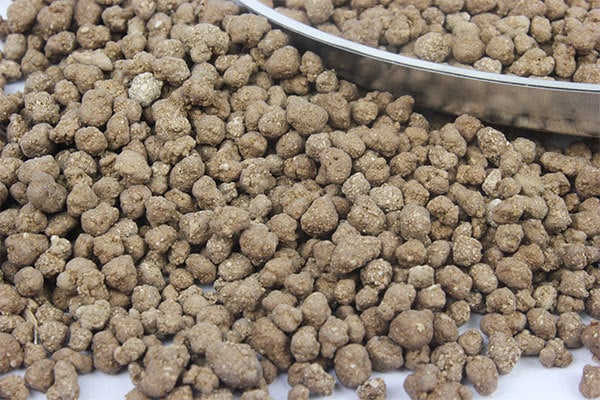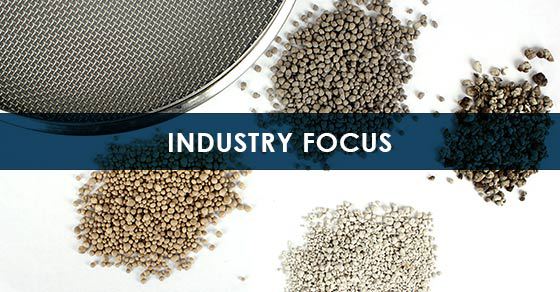Gypsum, or hydrous calcium sulfate, is a crucial mineral in the production of everything from wallboard to cement and even many consumer products, surrounding us throughout our daily lives.
United States gypsum production was at an estimated 20 million metric tons (Mt) of crude gypsum and 16 Mt of synthetic gypsum in 2019, allowing the US to maintain the title of world’s largest gypsum producer.¹
And while production was lower than previous years, experts anticipate the gypsum market will continue to expand; globally, a CAGR of 5% between 2020 and 2030 is expected, according to research firm Future Market Insights.
The following information provides an overview on the US gypsum market, including how and where gypsum production occurs, and the major US gypsum market sectors.
How Gypsum is Produced in the US
Gypsum production is carried out both naturally and synthetically in the US.
Natural Gypsum
Natural gypsum ore is extracted through quarries and underground mines, after which it is crushed and screened. A gypsum ore dryer is often necessary to reduce the surface moisture and prepare the ore for further processing. A grinding step may follow drying.
Synthetic Gypsum
Synthetic gypsum, or syn gyp, is produced as a result of the flue gas desulfurization process used at coal-fired power plants to scrub pollutants from emissions. For this reason, it is also referred to as FGD gypsum.
The low-cost availability of natural gas (along with other factors) has cut use of coal in the US and subsequently put pressure on synthetic gypsum production and the industries that have come to rely on it.
Other forms of synthetic gypsum, such as phosphogypsum, are also produced. Depending on the intended end use, natural or synthetic gypsum may be calcined as part of the production process.
About US Gypsum Production
As a nation, the United States is rich in gypsum deposits. Data from 2017 shows that crude gypsum was produced in 16 states by 50 mines. The states that produced the most crude gypsum were, in descending order:²
- Oklahoma
- Nevada
- Texas
- Iowa
- Kansas
- Colorado
- Arkansas
- Utah
- California
- Wyoming
In total, the US produced an estimated 17.5 million metric tons (Mt) of crude gypsum in 2017, with the states above contributing about 86% to domestic output. US crude production accounted for 13% of global output. For the same year, 400 producers in the nation generated 32.7 Mt of synthetic gypsum.²
Gypsum Use in the United States
Gypsum lends itself to a diverse range of applications. The US takes full advantage of gypsum’s extensive capabilities through several robust sub-sectors.
Total apparent consumption in the US for 2019 totaled 42 million tons, where, as usual, the majority of gypsum was employed in the production of building materials such as wallboard and plaster products.¹
Wallboard and Plaster Products
Gypsum can provide many benefits to wallboard and related products, but most importantly, it is chosen for its natural resistance to fire. Gypsum wallboard use is expected to rise in the coming years both domestically and internationally, as new construction and remodeling projects increase and developing nations integrate more advanced materials and techniques into their construction practices.
Both natural and synthetic gypsum are used in wallboard production. Many producers favor synthetic gypsum because it is readily available, cost-effective, and sustainable. The United States is currently home to 63 gypsum board plants, capable of producing an estimated 34.1 billion square feet annually.¹ Many of these plants are strategically located in close proximity to coal-fired power plants for improved logistics.
After wallboard and related products, the bulk of remaining gypsum consumed in the US is used either as a soil amendment, or in cement production.
Gypsum Soil Amendments
Agricultural application of gypsum as a soil amendment or conditioner is a sizable market in the US. As a soil amendment, gypsum is essential, providing soil with the nutrients sulfur and calcium, plus benefits such as natural aeration, erosion relief, enhanced soil structure, and more.
This market is expected to grow as improving agricultural productivity continues to be a central focus of modern agriculture.
As with wallboard, gypsum used in agricultural applications may be of natural or synthetic origin.

Synthetic gypsum soil amendment sample produced during process development testing in the FEECO Innovation Center
Gypsum in Cement
Gypsum is also widely used throughout the US (and the world) in the production of cement, where it helps to control the rate of setting/hardening and brings benefits such as fire resistance, sound dampening, lightweight properties, and more. Here again, both natural and synthetic gypsum may be employed, but natural is generally preferred for easier handling properties in this sector.
Additional Uses for Gypsum
While the uses above cover the major US gypsum markets, several other industries employ gypsum in small quantities for a range of different products and applications, including:
- Animal Bedding Additives
- Absorbents
- Industrial Fillers
- Water Clarification Applications
- Food Additives
Though not an end-use market, the US is also home to a growing gypsum recycling sector, aimed at reducing waste in landfills and taking advantage of gypsum’s eternal recyclability.

Agglomerated gypsum wallboard waste produced during process development testing in the FEECO Innovation Center
Conclusion
Gypsum is an important mineral both domestically and internationally. As the leading nation in gypsum production, the United States boasts a healthy gypsum industry that brings natural and synthetic gypsum to market through various wallboard and plaster products, soil amendments, cement, and more.
FEECO has been supplying custom handling and processing equipment, as well as process development services and parts and service support to the gypsum industry since 1951. Our extensive experience around both natural and synthetic gypsum production spans across the mineral’s diverse applications and use in a range of products. For more information on our gypsum processing equipment and services, contact us today!



